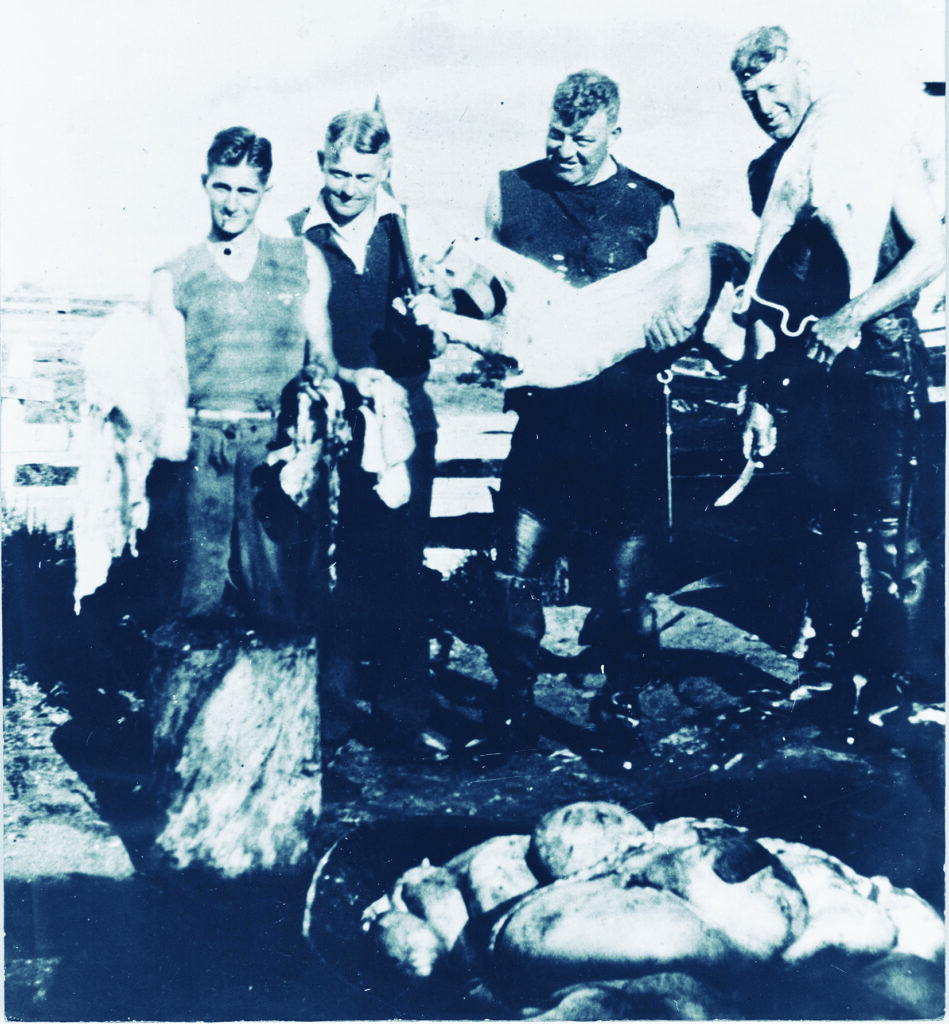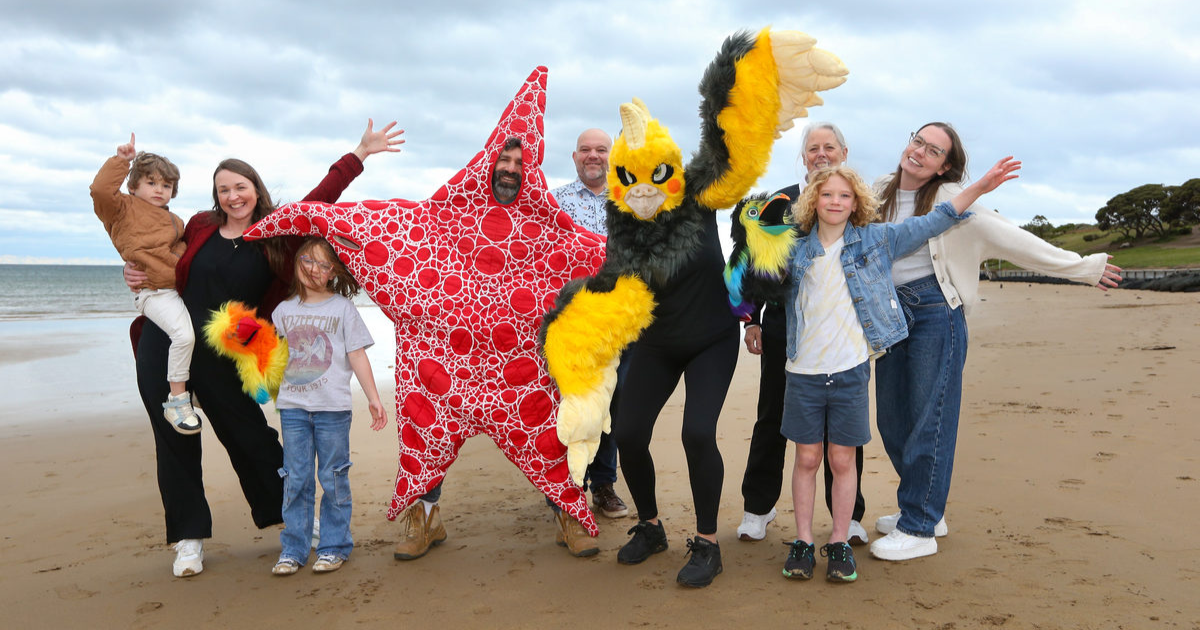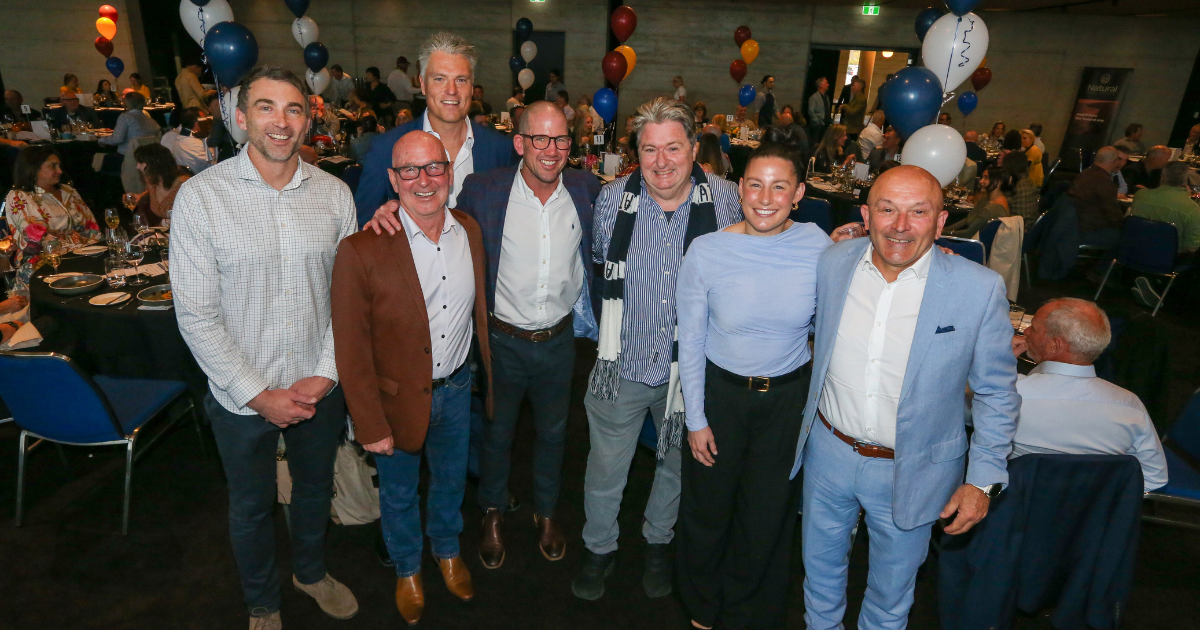Committee for Lorne: The Slaughterhouse Site
The Slaughterhouse Site
There is a substantial tract of land just beyond the limits of the Lorne township that has long been known as ‘the Slaughterhouse site.’ Similar sites can be found at the edges of most country towns.
Lorne’s Slaughterhouse site is an exposed, windswept, rather wild, and very beautiful parcel of undeveloped land that stretches to the south of Hird Street [the last street in Lorne]. Its frontage skirts around the Great Ocean Road towards the [St] George River to the south, while its rear nestles back against the Queens Park Reserve. Bushwalkers will know it as the starting point of the Tramway Track that follows the old timber railway from the lower contours of Teddy’s Lookout to the George River bridge. Its seaward aspect looks out over Bass Strait and, from its southern corner, the mouth of the George River.
While the Slaughterhouse site is largely unknown to most, it still surfaces when a plot of land is being considered for development, though I fervently hope that it will remain forever untouched. Like the Anglesea Heath that edges the southern border of Anglesea, Lorne’s Slaughterhouse site creates an untamed border at the southern edge of the town that is both charming and primitive. Long may that be so!
As its name suggests, the site was once Lorne’s killing field … a place where the animals that provided necessary protein for the township were brought to be killed and dismembered. Lorne’s timber industry and hinterland, the hospitality industry that underpinned its burgeoning reputation as a tourist destination, and later the returned diggers who built the road—all demanded and received animal protein from the slaughterhouse. Like most like sites in most towns and villages, it was tucked away ‘around a corner and out of public sight’, as the thought of slaughtering animals for food was troubling to the public conscience and was anathema to Victorian-era sensibilities. To be out of sight and out of mind was essential.
However, like it or not, ‘slaughter and eat’ is an embedded cornerstone of every food chain … indeed every living creature kills and consumes, and the human omnivore is at [or close to] the top of that often cruel but necessary food chain.
One observation perfectly captures this history when, several years ago, as part of his school project on ‘The History of Lorne’, one enterprising Lorne P-12 College student created an excellent video series documenting the memories of some of our key living treasures. During his sit-down interview with Henry Love, Henry correctly observed that “any meat eaten in the early decades of Lorne walked into town” to be slaughtered locally. Animal death to satisfy human needs has always been ‘a fact of life’.
For as long as there has been a recorded history, slaughtermen have provided this essential service. While vegetarians and vegans would take issue with my phrase ‘essential service’, this is not the place to argue the pros and cons of the vegan cause. Suffice to say that slaughtermen are expected to adhere to a strict code of ethics that ensures that animals are treated with respect, dispatched as humanely as possible, and later butchered efficiently and well.
Slaughtermen and butchers are different beasts. While in past centuries, the two were blended as one, nowadays a slaughterman stuns, kills, skins, eviscerates, then splits and hangs animal carcasses for cool room curing. Meanwhile, a butcher provides a retail outlet where skilled craftsmen [butchers] break down a slaughterman’s cured and prepared carcasses into defined ‘cuts’ for customer consumption. Lorne has ‘hosted’ both functions.

Slaughtering—ever a gruesome task—has traditionally been undertaken out of sight and out of mind of the public view, while butchering has held such general fascination that it is routinely conducted ‘on main street’ and in full public view. As the Lorne township evolved, animal slaughter was relegated to ‘around the corner’ where a slaughter yard was built on the tract of open land facing the Southern Ocean beyond Hird Street, the most southerly street in Lorne. Windswept, cold, and isolated from the rest of the town, the Slaughterhouse site was far enough away from the public gaze to avoid offending the tourists who were flocking to the town in the late 19th century.
Slaughtering was first ‘approved’ in December 1887 when the Winchelsea Shire Council approved a slaughter licence for William Devling. In February 1889, he transferred it to his brother-in-law, Hamilton Dorman [proposed: Councillor Hopkins, seconded: Councillor Mountjoy]. Then, in 1910, Thomas Brown was granted a renewal of his slaughterman’s licence—for a fee—but, thereafter, the slaughterhouse trail runs cold. It is not mentioned in the LHS records after 1920.
This is not surprising, given that rail transport was now nearby, roads were improving, and economies of scale were forcing the closure of small regional slaughterhouses in favour of larger, more efficient centralised abattoirs. In this context, there was little need for each town to sustain local killing, so, along with many others, Lorne’s slaughter field finally fell silent.
Butchering—once an indispensable occupation in every small town—also began to struggle to compete with a food distribution industry that was rapidly centralising. It is easy to forget how much past generations depended on the local shops. The butcher, greengrocer [for fruit and veggies], fish shop, delicatessen, and grocer [where the staples came in bulk and were scooped into paper bags—who can forget Ivy’s bangs] … all have largely gone. Now our beef, lamb, pork, and chicken come conveniently pre-packed, vacuum-sealed, or cryovaced, and only a few butchers now remain, at markets or where a point of difference or niche market can be sustained. Although Stabby’s still hangs on in Anglesea, Lorne’s mid-town butcher shop fell to the bell-toll and closed after more than a century of continuous service to the town.
Jim and Hamilton Dorman opened Lorne’s first butcher shop at the end of Grove Road in 1879. After wielding their knives and saws until the mid-1920s, they briefly sold it to the Muirs from Forrest before Jack and Toby Alsop bought it. After years of Alsop rule, it was purchased by Nash Button Challis, who came to Lorne for a holiday, met Silvia Clissold, and stayed … Challis’s it remained thereafter.
Challis’s shop, with its iconic, white-tiled frontage and its deep-set, scalloped verandah, remains to this day, tucked into its bend on Mountjoy Parade as an echo of a bygone era. Meanwhile, beyond Point Grey, the ghosts of slain animals prowl the night and the Slaughterhouse site remains wild and untamed … just as it should.
John Agar
Feature Writer
A word from the chairman
Hello
Bye Bye Winter, hello Spring! Well maybe not so fast! Although our calendar tells us winter is over and spring is in the air, Mother Nature chooses her own time. At least the days are getting longer and our gardens are showing new life (and weeds!).
*****
This week, GORCAPA published a suite of documents including the final Urban Design Framework (UDF), a Community Engagement report and concept designs for the two proposed new buildings. You can view these documents at https://tinyurl.com/y2ryda5k.
While, at the time of writing, I have not had an opportunity to review all the information in detail, I can confirm that the UDF has been amended following extensive community consultation and input with 493 responses to the survey that accompanied the draft UDF released in May, and 15 written submissions.
The draft UDF has been amended to include the following:
- A boat wash
- A public fish-cleaning station
- Relocation of the public toilets from the previously planned stand-alone building to now be incorporated into the “reimagined” Co-op building.
- Redesign of the previously planned plaza to be a “flexible use” space allowing for multiple uses at different times including community events and extra parking.
While it is pleasing to see that much of the community feedback to the draft UDF has been considered and adopted, there is still more work to do.
The proposed food and drink outlet in the rebuilt Co-op building will be unlicensed and is planned to have 10 seats internally. While the proposed operating hours and lease rental have not been disclosed, hospitality operators we have spoken to have serious reservations about the financial viability of such a venue, given its remoteness from the town centre, and weather exposure. What the community wants is the Pier Restaurant back, not a take-away shop and not a “destination” restaurant. Hopefully further discussion will lead to a sensible and financially viable outcome.
The proposed recognition of post-European settlement history is inadequate and demonstrates a lack of understanding of the importance of early tourism which was the foundation of Lorne, together with the timber and fishing industries which shaped the town and the Pier precinct. It is to be hoped that further discussions with our Historical Society will result in a technology-based solution that will acknowledge this history in a more appropriate way than “artefacts in display cases”.
*****
Five of our netball and football teams move into the second week of finals after mixed results last weekend. Our Reserves footballers take on Birregurra at Central Reserve, Colac on Saturday for a place in the Grand Final, while the Senior footballers will take on Irrewarra Beeac for a spot in the preliminary final on Sunday. In Netball the D grade, 15 and under and 13 and under netballers will also play on Sunday. Please come along and support all our players if you can.
Happy Father’s Day to all the dads and grandads, old and new, and remembering fathers who are no longer with us, please enjoy the attached clip and feel free to cry (I do). https://tinyurl.com/john-mcdermott.
Cheers
Lorne Ward Events Calendar
September
7 – LAAC Winter Comp No 4. lines down after 6am, weigh in at the Lorne Aquatic and Angling Club at 12.30pm. Free roast lunch for competitors, $10 non-fishing members.
10 – Round Two Lorne Bowls Club Community Cup
17 – Round Three Lorne Bowls Club Community Cup
19-20 – Waking to Wonder Art Exhibtion, by Lorne P-12 College at Lorne Community Connect. 9am – 12pm free entry
28 – Lorne Aquatic & Angling Club – Major Fishing Competition No 5, Weight cut off at 12.30pm, Free roast lunch for competitors, $10 non-fishing members.

















